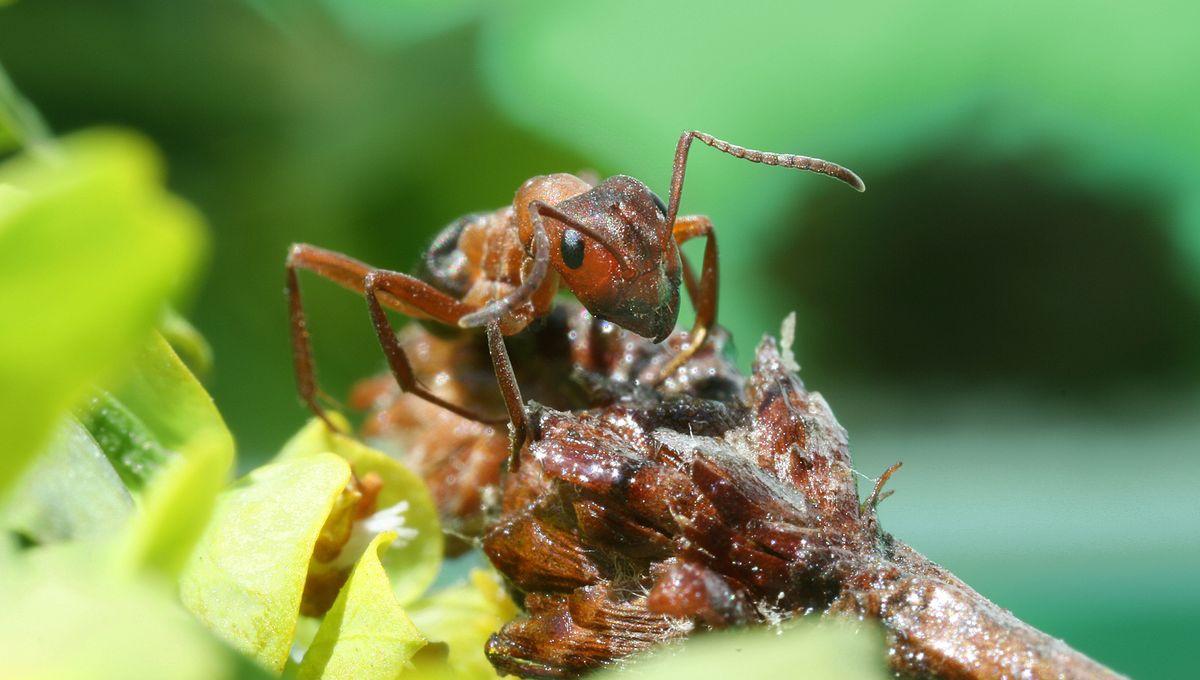“Tangy And Herbaceous” Yogurt Made With Forest Ants – And They’re Not For Extra Protein

“Tangy And Herbaceous” Yogurt Made With Forest Ants – And They’re Not For Extra Protein
From whale milk cheese to boiled penguin eggs, we at IFLScience love a freaky foodie story. This latest one, however, might just take the cake. Reviving a traditional Balkan recipe, intrepid scientists have made – and taste-tested – yogurt produced using a very unexpected secret ingredient: ants.
The rest of this article is behind a paywall. Please sign in or subscribe to access the full content. This is not about finding new and bizarre ways to add protein to food. The ants are actually central to the production of the yogurt, providing lots of the necessary elements in one handy arthropod package. Yogurt is made by fermenting milk, a process that dates back to as early as 7,000 years ago when there is some archaeological evidence of our ancestors making cheese. Fermentation relies on bacteria, and we only started to figure it out at the microbiological level in the early 20th century. The yogurt you pick up in the grocery store today is often mass-produced in controlled conditions in a factory – a far cry from the traditional yogurt-making that generations of our forebears participated in. Behold: the beginnings of ant yogurt. Image credit: David Zilber “Today’s yogurts are typically made with just two bacterial strains,” said senior study author Leonie Jahn of the Technical University of Denmark in a statement. “If you look at traditional yogurt, you have much bigger biodiversity, varying based on location, households, and season. That brings more flavors, textures, and personality.” Co-author Sevgi Mutlu Sirakova’s relatives remember a different way. In their home village of Nova Mahala, Bulgaria, and in other forested parts of the Balkans and Türkiye, locals figured out a way of making yogurt with the help of red wood ants in the Formica genus. The team traveled to Nova Mahala and gave it a go for themselves. “We dropped four whole ants into a jar of warm milk by the instruction of Sevgi’s uncle and community members,” said lead author Veronica Sinotte of the University of Copenhagen. The red wood ants, Formica rufa, had been collected from a colony just outside the village. The milk and ant mixture was left to incubate in an ant colony. Image credit: David Zilber The jar was buried overnight in an ant mound. By the next day, they had “an early stage of yogurt”, according to Sinotte, “and it tasted that way as well.” The taste of the finished yoghurt was described by the team as “slightly tangy, herbaceous, and having flavors of grass-fed fat.” Forgive us if we’re not rushing to add that to our morning granola. So, how exactly do you go from dropping ants into a jar of milk to apparently edible yogurt? The insects are actually bringing a lot to the party. They carry bacterial species that produce both lactic acid and acetic acid, including one type that’s found in commercial sourdough. These acids are needed to curdle the milk and contribute to yogurt’s tangy taste and thick texture. The ants also produce formic acid as a natural defense mechanism, which contributes to creating the perfect pH for yogurt microbes. Enzymes produced both by the microbes and by the ants themselves can then go to town on the milk proteins. It only really works with live ants – the team tried frozen and dehydrated too – and you do have to be a bit cautious of parasites. But undeterred, the scientists teamed up with the chefs at two-Michelin-star restaurant Alchemist to whip up some ant yogurt recipes, including an “ant-wich” (think an ice cream sandwich but with yogurt), mascarpone-like cheese, and ant milk-washed cocktails. Evidence that yep, they really did eat it. Image credit: David Zilber For the team, the whole experience was a chance to not only delve into some fascinating science, but to celebrate an all-but-forgotten tradition. “I hope people recognize the importance of community and maybe listen a little closer when their grandmother shares a recipe or memory that seems unusual. Learning from these practices and creating space for biocultural heritage in our foodways is important,” said Sinotte. Jahn added, “Giving scientific evidence that these traditions have a deep meaning and purpose, even though they might seem strange or more like a myth, I think that’s really beautiful.” Given that some of IFLScience’s previous culinary chronicles have involved 250-year-old fruit, blue beef soup, and knee Bolognese, ant yogurt is beginning to sound more and more appealing. Pass the spoon. The study is published in the journal iScience. 




